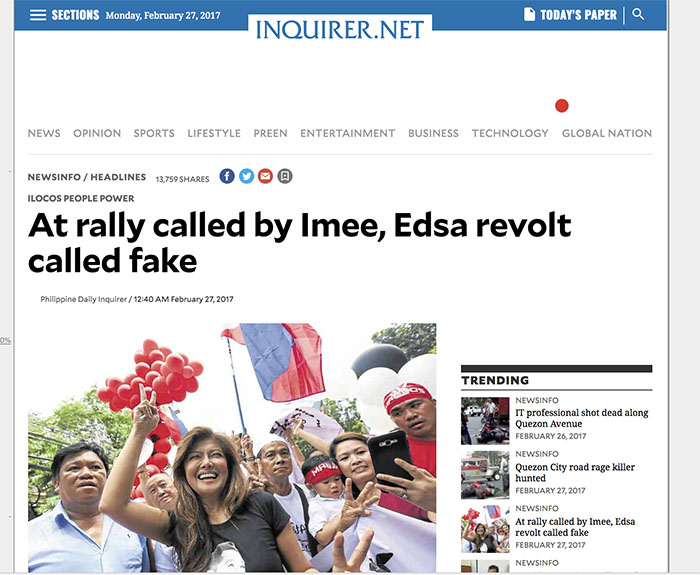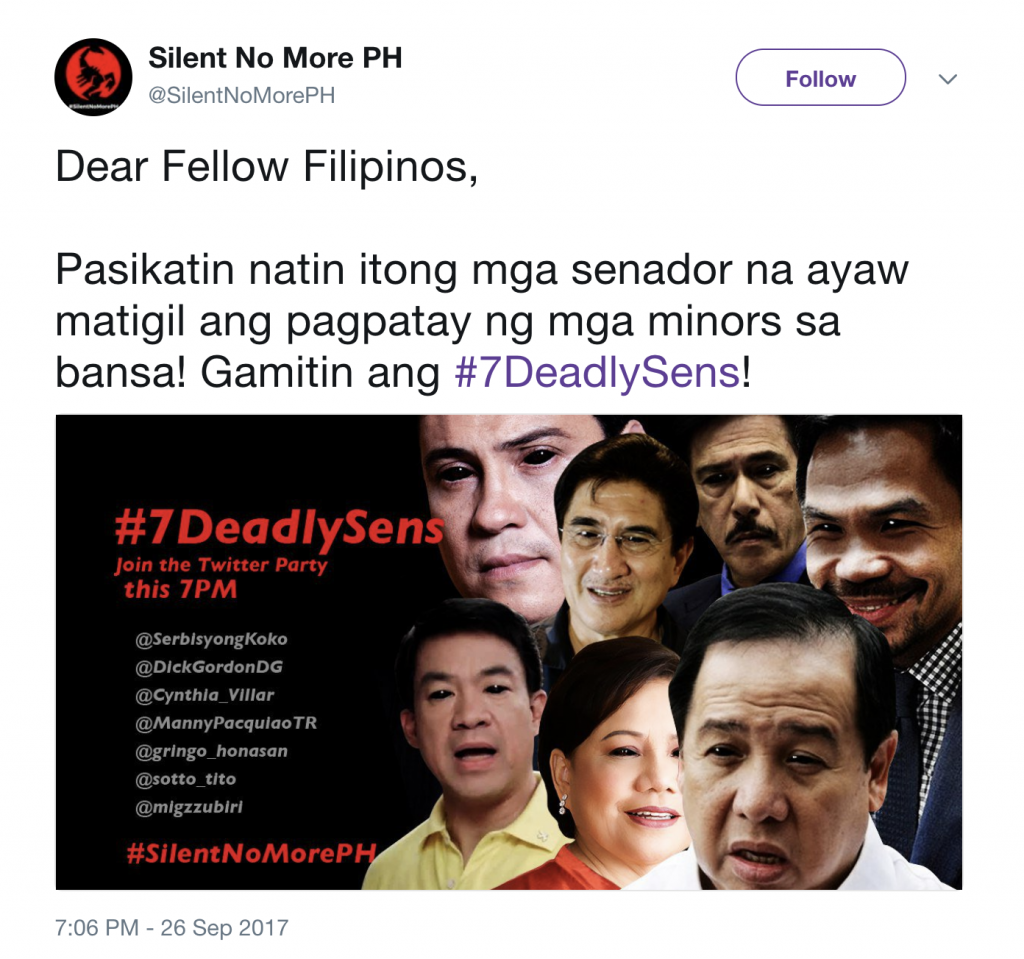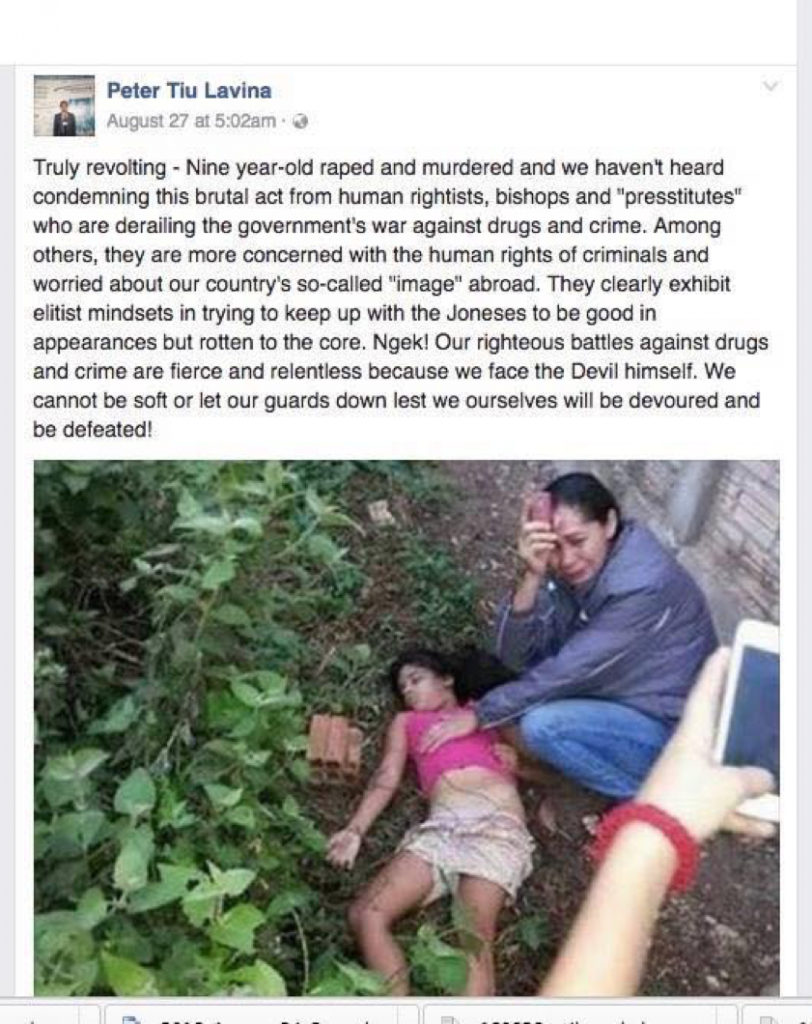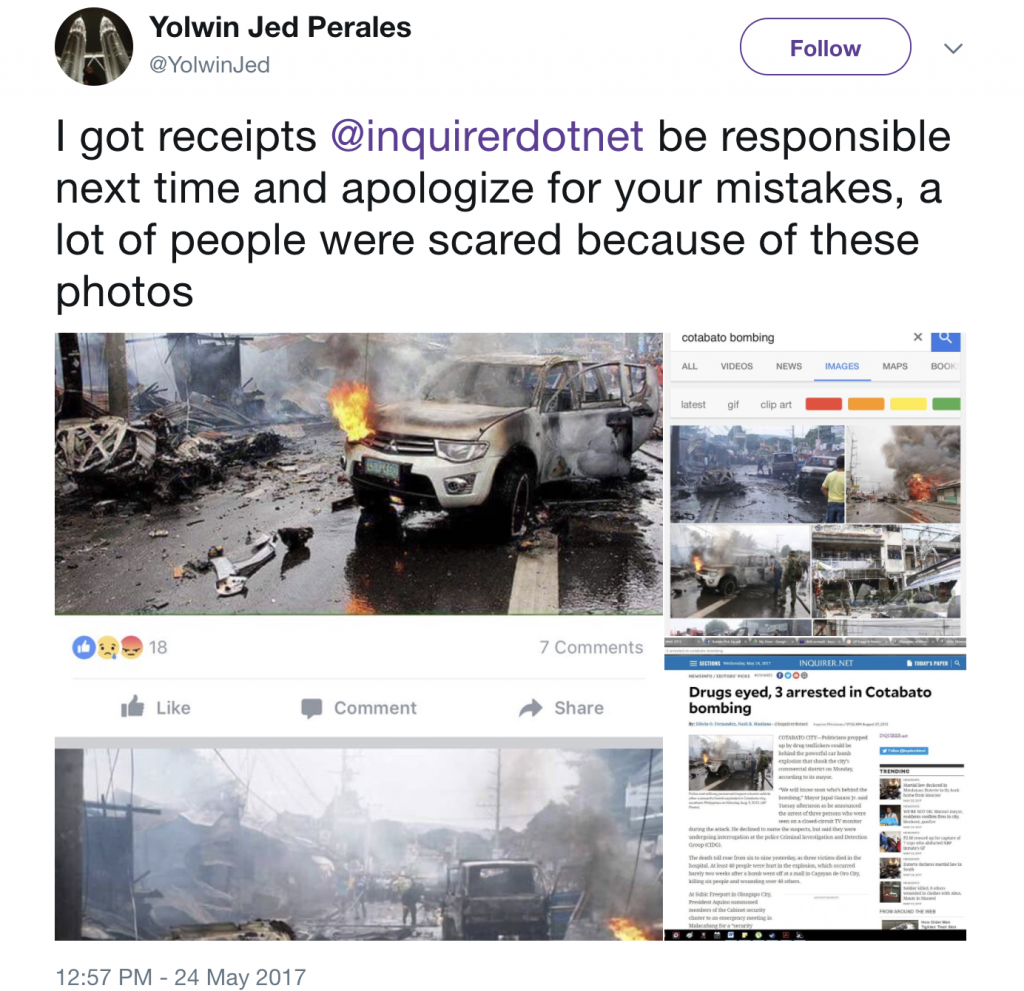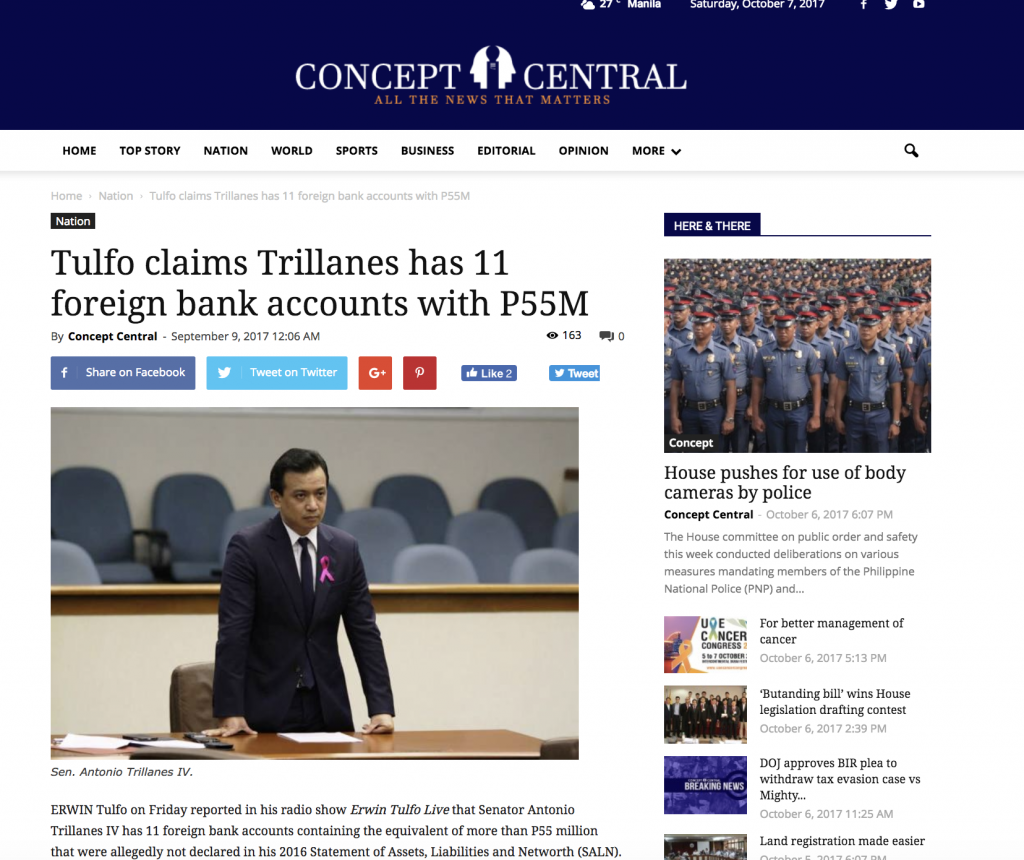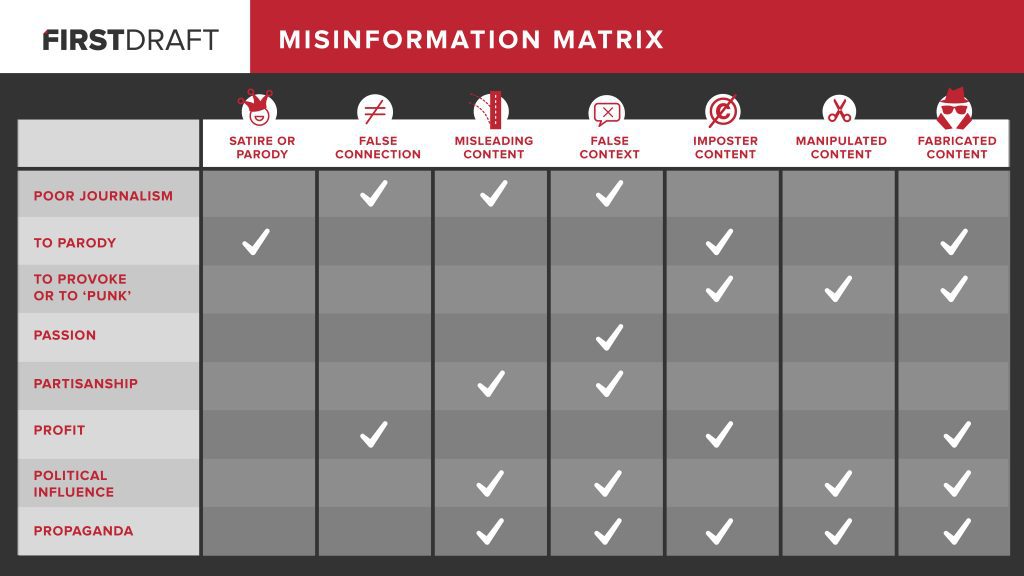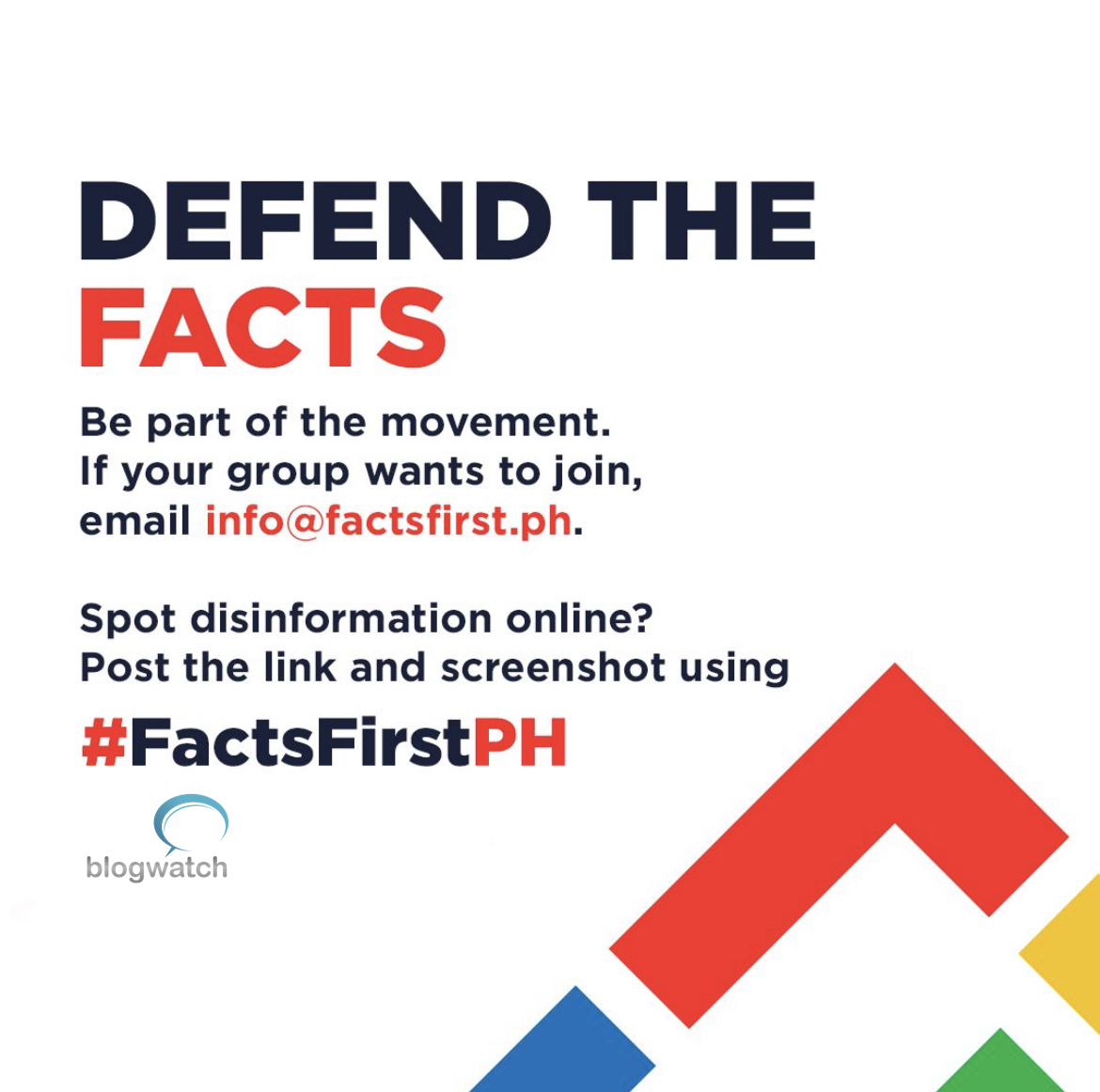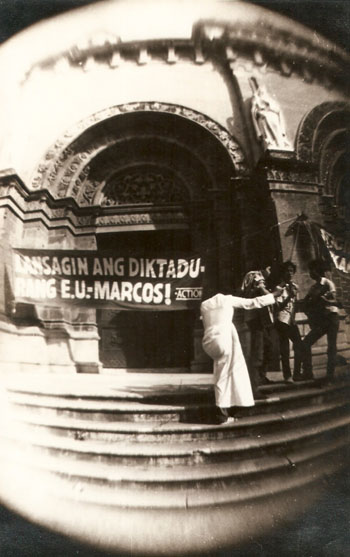Fake news: 7 types of mis- and disinformation (Part 1)
First Draft News says fake news is associated with “misinformation” and “disinformation”. Part 1 shows examples of these seven types of “problematic content that sit within our information ecosystem. They sit on a scale, one that loosely measures the intent to deceive.”
Remember, fake news is not new. Some of the propaganda during martial law was fake news . I remember the Marcoses portrayed themselves “in the likeness of legendary personae Malakas and Maganada in the Filipino origin myth, which made them appear as fount of life in murals and photographic visuals.”
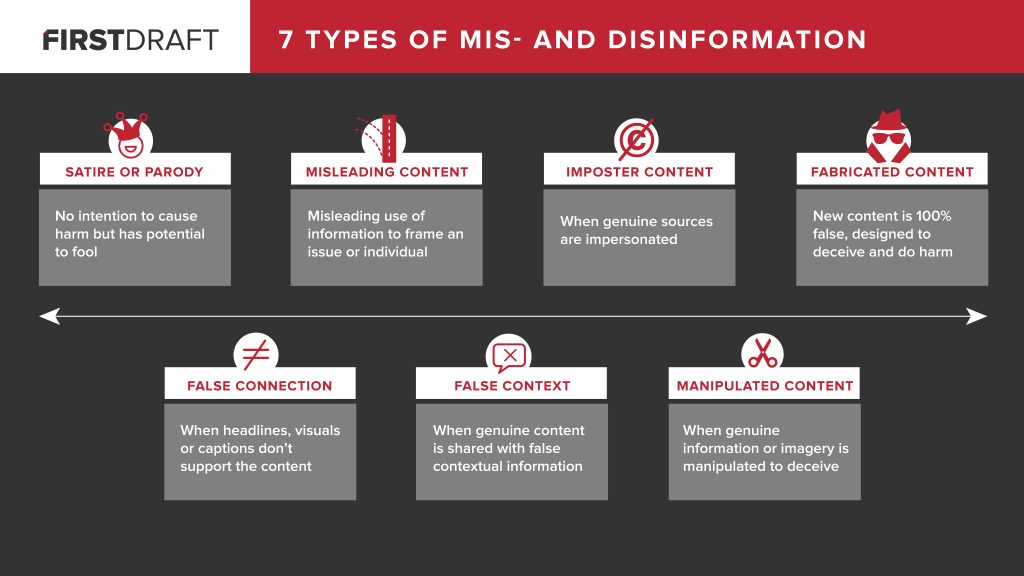
It’s been almost a year when I first wrote about fake news, half-truths and until now , there is no one definition. Claire Wardle, of First Draft News believes the term “fake news” is pointless and journalists should stop using it. She adds that fake news is associated with “misinformation” and “disinformation”. Wardle explained the difference between misinformation, where information is false but the person circulating it believes it to be true, and disinformation, where the information is also false and those responsible are fully aware.
To understand the misinformation ecosystem, First Draft news listed a break down of the types of fake content, content creators motivations and how it’s being disseminated.
READ: Here are 8 tips on how you can stand up for facts
READ: Tools and strategies to determine fake news, half-truths, from real news
Let’s see some examples in the local setting and you might want to share other examples in the comment section.
1.Satire or parody- no intention to cause harm but has potential to fool.
Know your satirical websites like the Adobo Chronicles as shown below. There is also So What’s News, Professional Heckler and possibly many more out there.
This news below fooled a lot of my mommy friends on facebook. It was originally posted on October 2016 by NewsPH . The header on the website itself revealed that NEWSPH posts “satire news for your entertainment.” It has resurfaced the past few weeks in other websites who do not clearly state that the news is satire. The “news” says the President signed an executive order mandating all Educational Institution to prohibit teachers from giving students of all levels assignment. Of course, many mothers were pleased because it will mean no homework for their kids.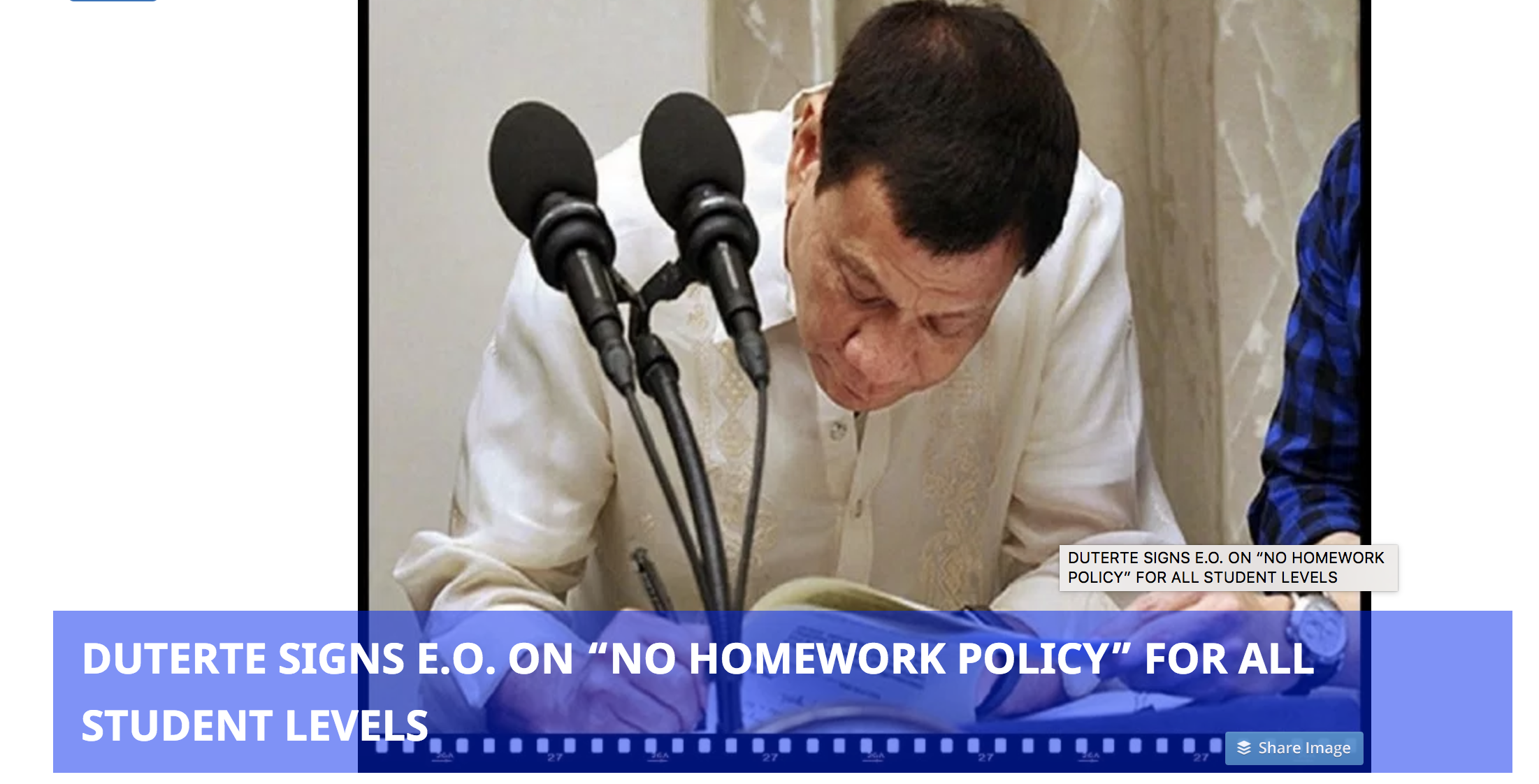
2. False connection- When headlines, visuals or captions don’t support the content
On February 27, 2017, the Philippine Daily Inquirer ran a story on Page A12, with the head “At rally called by Imee, Edsa revolt called fake.” Carlos Munda called the news as “a very big disconnect between the story and the headline.” Munda added that “the goal of the writer and her editor is to create the impression that the Marcoses was denigrating the memory and sacrifice of the Filipino people in 1986, which despite the betrayal of the politicians who benefited from it, many still hold sacred. ”
Inquirer issued a statement that “neither the headline nor the story asserted that Ilocos Norte Gov. Imee Marcos was at the rally. The story clearly identified the source who called Edsa fake: Prof. Herdy Yumul. It ran with a file photo of Marcos, taken at another rally, but cropped; the caption noted that it was another rally.”
This type of false connection can happen depending the platform used to read the news. The statement further added that “the version of the story that ran on mobile, however, failed to carry the caption; on Facebook, the caption appeared only if the reader clicked on the photo. On the web, the version carried the uncropped photo. On these three platforms, the versions created the misimpression that Marcos was at the Ilocos Norte rally or suggested a new reading of the headline: That Marcos had called Edsa fake. Either reading is wrong, and we regret that our errors led to them.”
If a headline strikes you as so outrageous that you want to immediately tell all your friends about it, take a quick pause.
3. Misleading content – Misleading use of information to frame an issue or individual.
RJ Nieto, otherwise known as “Thinking Pinoy” blog, “said photojournalist Jes Aznar posted a live video of military operations in Marawi City while he was embedded with government troops. ” He wrote on his Facebook page that Aznar’s post “revealed positions of government soldiers” during an encounter against the local terrorist group Maute in Marawi City. Vera Files looked into the embed code of the 17-second video uploaded on Aznar’s Instagram . The video was uploaded on the internet 73 minutes after it was taken. The National Union of Journalists in the Philippines and the Photojournalists Center of the Philippines denounced Nieto for spreading falsehood and endangering Aznar’s life.
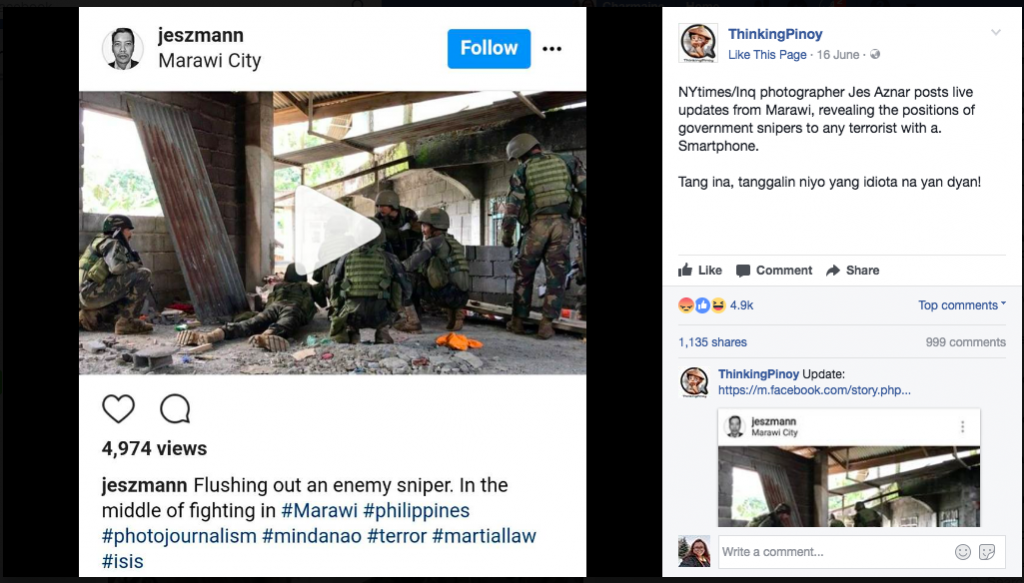
(Source: ThinkingPinoy June 18 Facebook post, Jezz Aznar get out of Mindanao for you own good)
In another example, seven senators were angry at the “fake news” that they did not sign Senate Resolution 516 denouncing teenage killings. Except for Sen. Gregorio Honasan II who did not take the floor, Senate President Aquilino Pimentel III, Senate Majority Leader Vicente Sotto III, and Senators Manny Pacquiao, Cynthia Villar, Richard Gordon and Juan Miguel Zubiri made it clear that they were not aware of Senate Resolution No. 516, which was signed by 16 of their colleagues.
4. False context- when genuine content is shared with false contextual information
Mocha Uson shared a post of Peter Lavina which claimed that a young girl was murdered due to the drug problem in the Philippines. Like Lavina, she was outraged as to why the Commission on Human Rights didn’t focus on the incident.
However, the photo was of a nine-year-old Brazilian girl who was raped and murdered in 2014. BBC called her attention and she later took down the post.

Inquirer on May 24, 2017 posted on its Facebook page five photos purportedly taken in the aftermath of the Marawi City siege. They posted an apology on Facebook that it was a mistake, “and we apologize unreservedly. Two of the photos were taken down around noon, when we double-checked with the source, and the rest were removed around 1 pm, when even the source’s assurances could no longer be supported. We regret not moving fast enough to correct the mistake.”
5. Imposter content – When genuine sources are impersonated.
Mainstream media can also be victims of imposter content. The quote used by Yen Makabenta in his column “apparently came from a fake news website disguised as the website of Qatar-based media company Al Jazeera”. One really needs to look at the web address. Is it a clever knock-off? For example, abcnews.com dot co is a phony version of the actual news site abcnews.go.com and is a purveyor of fake news.

Source: http://www.manilatimes.net/superstar-speaks-give-duterte-space-run-philippines/352300/
6. Manipulated Content- When genuine information or imagery is manipulated to deceive
Memebuster is a website dedicated to bust fake news and lies aside from their news and fact category The photo above was manipulated to read “Gutom lang ang inabot ko #NeverAgain.” instead of “End Martial Law #Neveragain” . Memebuster added that “when Facebook page “Duterte Global Supporters” shared it on September 22, a day after the September 21 rally against dictatorship, it was shared thousands of times.”
A tweet can be manipulated as in the case of Senator Trillanes who was quoted by ANC “Elected official kami. KInakatawan namin ang mamamayan; ‘yon ang trabaho namin. ” . The screencap of the tweet was edited to show Assistant Secretary Mocha Uson as saying it.
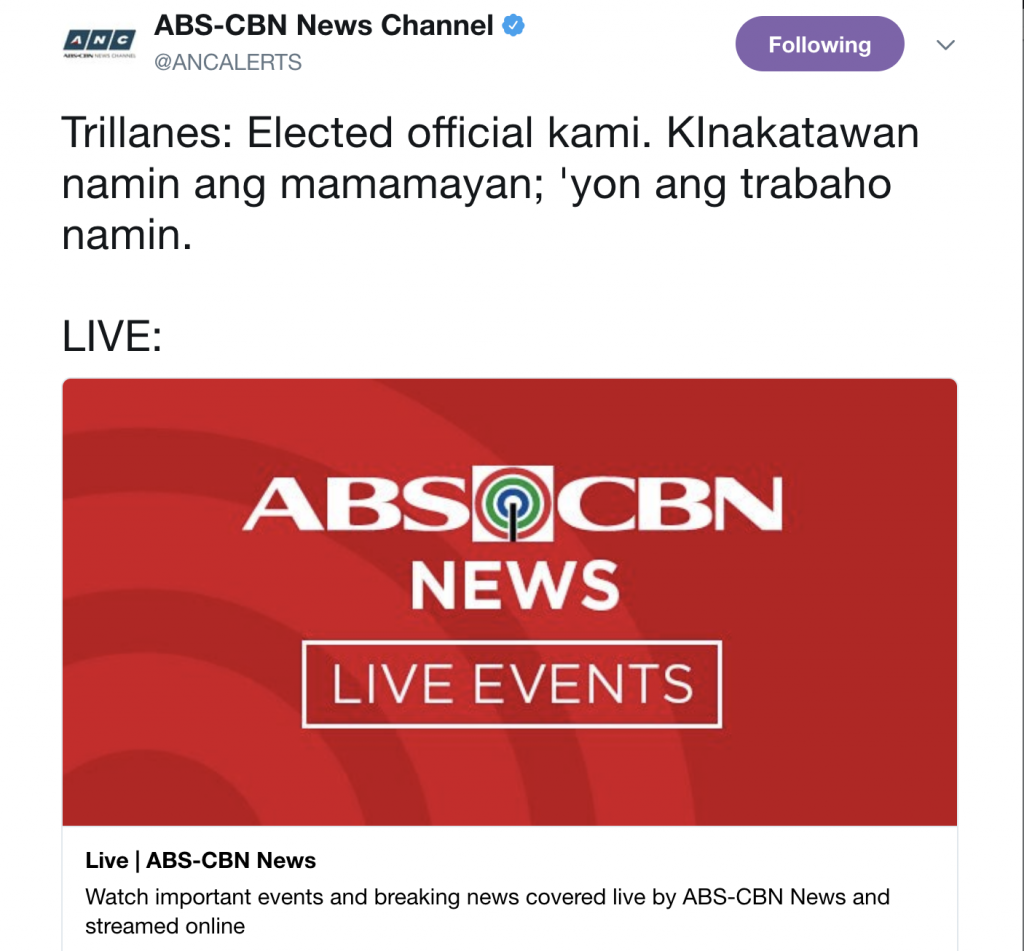
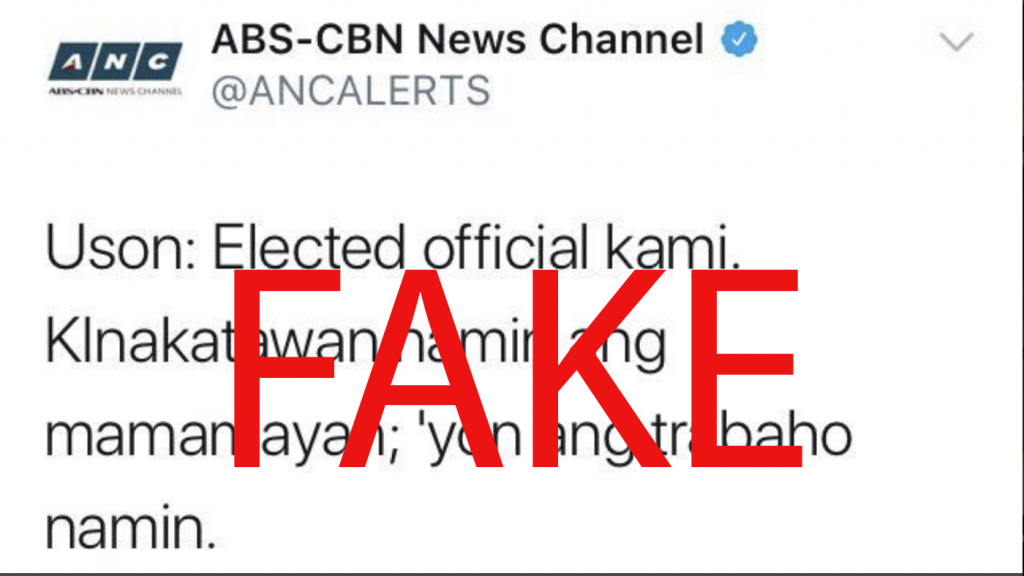
The facebook status posts can also be manipulated.
Krizette Laureta Chu, a pro-Duterte supporter explain manipulated content on Facebook. She cites that content is created which is combined with true stories lifted from news sites like GMA. The content is copied from social media users and editorialized . An example is “BATIKANG JOURNALIST IRA PANGANIBAN CALLS LENI GAGA or whatever); and then when site has reached enough followers, start deploying fake news, like TATAY DIGONG, NAMIGAY NG P300,000 SA MGA MAGSASAKA KAHAPON.”
Sass Sasot also uncovered the experiment on gullible Duterte supporters as spurious. Philippine Star came out with an article “Duterte supporters fall for ‘gullible’ posts, netizen’s experiment finds“. However, Sass showed the edit history of Jan Gonzales post. He edited the message of his post several times at different hours. As shown in the screencap of the edit history , the first post was “Type YES” mga ka-DDS kung gullible kayo” while another edit was changed to “Type Yes mga ka-DDS kung suportado nyo si PRRD” . Naturally, Duterte Supporters answered yes. The last edit showed “Type Yes mga ka-DDS kung credulous tayo kay PRRD” . I cannot find the original post of Jan Gonzales as it was taken down at the Team Duterte for Federalism facebook page. But even if this is false, it is possible to edit the original post to different messages.
7. Fabricated content – New content is 100% false, designed to deceive and do harm
What happens when a government official is a purveyor of fake news and mainstream media cites it in their news report? President Rodrigo Duterte admitted he invented the number of the bank account that he had accused Sen. Antonio Trillanes IV of having in Singapore – which allegedly contained millions. The bank account number of Trillanes was merely a “product of his mind.” It still baffles me on the purpose of revealing fake account numbers if he had the actual bank account numbers.
Source: Concept Central
8 Motivations for creation of these types of content
There you have it. These are seven types of misinformation and disinformation found in fake content or fake news with some overlaps . One also needs to think about who is creating these different types of content and why it is being created. Claire Wardle of First Draft, identified eight (8) motivations for the creation of this type of content:
1.Poor Journalism,
2. Parody,
3. to Provoke or ‘Punk’,
4. Passion,
5. Partisanship,
6. Profit,
7. Political Influence or Power, and
8. Propaganda.
Source: https://firstdraftnews.com/fake-news-complicated/
In Part 2, I will share six tips for identifying fake news and training yourself to be a savvy news consumer.


